1. MARPOL (The International Convention for Prevention of Marine Pollution For Ships)
Just like SOLAS, which regulates the shipping industry to follow minimum standards to safeguard life at sea, MARPOL is another important convention which safeguards the marine environment against ship pollution. MAPOL and SOLAS are considered to be two effective safety and environmental protection tools of IMO.
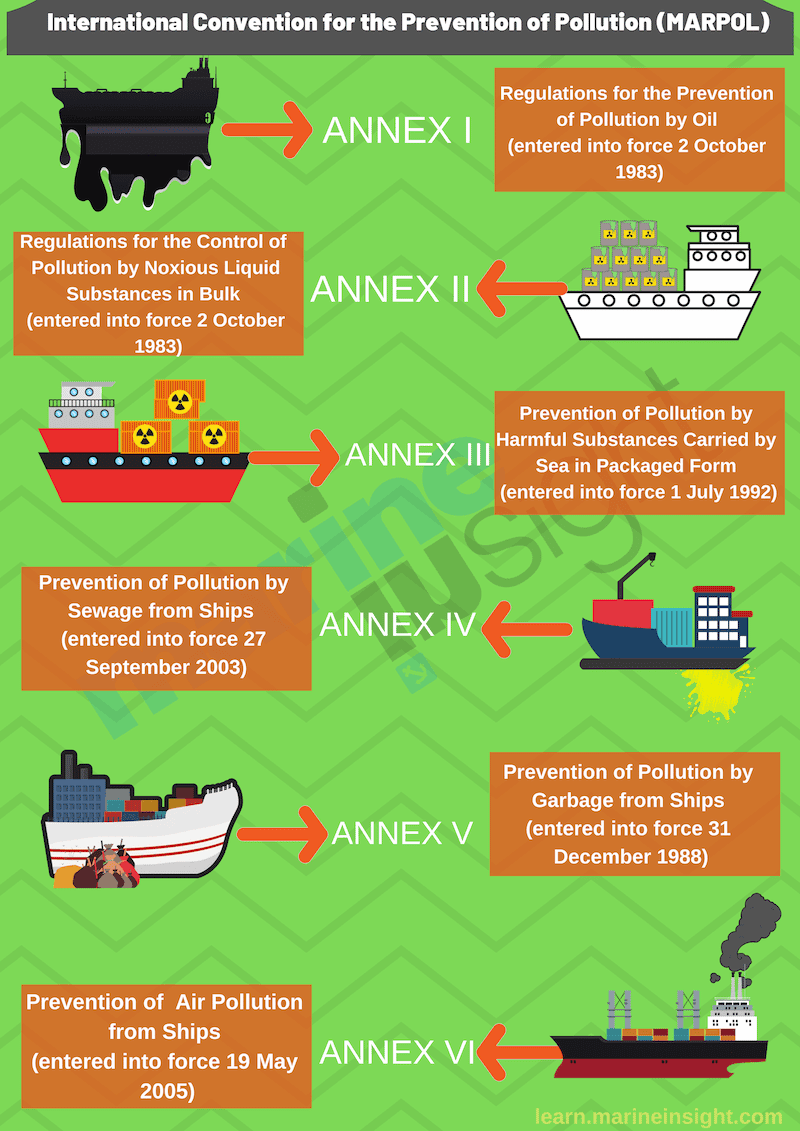
This marine environmental convention consists of six implemented annexes for controlling and eliminating of marine pollution.

They are as follows:
Annex I: Regulation for prevention of pollution by oil (October 1983).
Annex II: Regulations for control of pollution by Noxious Liquid Substance in bulk (April 1987).
Annex III: Regulation for prevention of pollution by harmful substance carried at sea in packaged form (July 1992).
Annex IV: Regulation for prevention of pollution by sewage from ships (Sep 2003).
Annex VI: Regulation for prevention of Air pollution from ships (May 2005).
Annex V: Regulation for prevention of pollution by Garbage from ships (Dec 1998).
Source: https://www.marineinsight.com/maritime-law/marpol-convention-shipping/
2. Safety of Life at Sea (SOLAS)
The word SOLAS is an abbreviation and SOLAS full form is “Safety Of Life At Sea”, an international maritime treaty, also known as SOLAS Convention or International Convention for the Safety of Life at Sea (SOLAS), which establishes the least safety measures in the construction, equipment and operation of merchant ships.
IMO SOLAS 74, the last adopted revised convention of 1974, includes a number of regulations under different SOLAS chapters, which deals with safety precautions and safety procedures starting from the construction of the ship to real emergency like – “Abandon Ship”. The convention is updated to meet the safety norms in the modern shipping industry from time to time.
This article explains the contents of SOLAS chapters and regulations providing a summary of SOLAS, i.e. different chapters of SOLAS and the regulations they carry. Marine Insight has provided links of various articles which will help the readers to understand how the regulation of the SOLAS Annexes is implemented on a seagoing vessel and the importance of SOLAS.
SOLAS 74
SOLAS CONTENT:
The SOLAS 1974 international maritime treaty comprises of 13 chapters and each chapter has its own set of regulations. The Following are the list of SOLAS all 14 chapters and the regulations they contain:
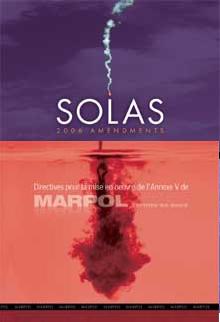
The International Convention for the Safety of Life at Sea (SOLAS), 1974 describes the requirement for all merchant ship of any flag state to comply with the minimum safety norms laid down in the chapters which are as follows:
Chapter I – General Provisions: Surveys and certification of all the safety items etc are included.
Chapter II-1 – Construction – Subdivision and stability, machinery and electrical installations: Deals with watertight integrity of the ship, especially for passenger vessel.
Chapter II-2 – Fire protection, fire detection and fire extinction: This chapter elaborates the means and measure for fire protection in accommodation, cargo spaces and engine room for the passenger, cargo and tanker ship.
Chapter III – Life-saving appliances and arrangements: All the life-saving appliances and there use in different situations is described.
Chapter IV – Radio communications: Includes requirements of GMDSS, SART, EPIRB etc for cargo and passenger vessel.
Chapter V – Safety of navigation: This chapter deals with all the seagoing vessels of all sizes, from boats to VLCCs, and includes passage planning, navigation, distress signal etc.
Chapter VI – Carriage of Cargoes: This chapter defines storage and securing of different types of cargo and containers, but does not include oil and gas cargo.
Chapter VII – Carriage of dangerous goods: Defines the International Maritime Goods Code for storage and transportation of dangerous goods.
Chapter VIII – Nuclear ships: The code of safety for a nuclear-propelled ship is stated in this chapter.
Chapter IX – Management for the Safe Operation of Ships: The International Safety Management code for ship owner and the operator is described clearly.
Chapter X – Safety measures for high-speed craft: safety code for the high-speed craft is explained.
Chapter XI-1 & 2– Special measures to enhance maritime safety: Special and enhanced survey for safe operation, other operational requirements and ISPS code is briefed in this chapter.
Chapter XII – Additional safety measures for bulk carriers: Includes safety requirement for above 150 meters length bulk carrier.
Chapter XIII – Verification of Compliance
Chapter XIV -Safety Measures for Ships Operating in Polar Waters
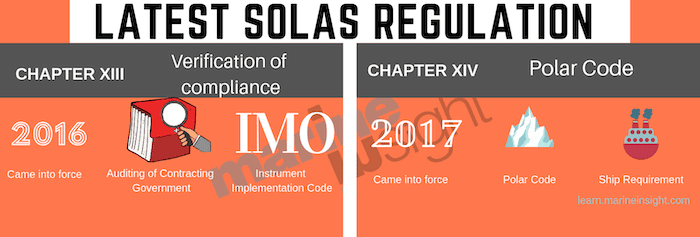
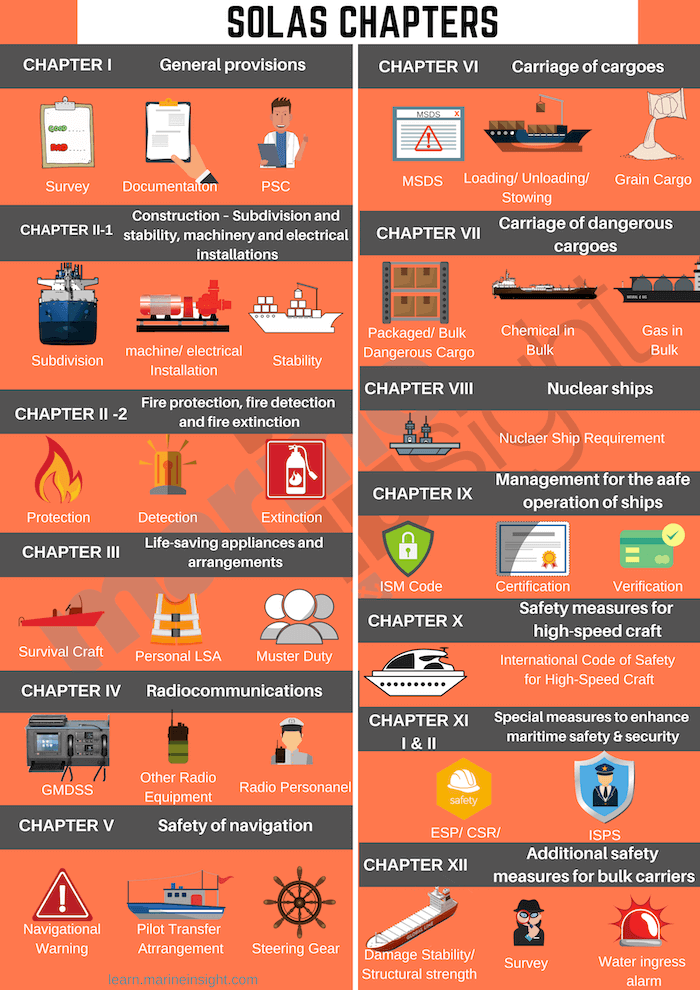
3. Maritime Labour Convention (MLC)
The main reason that the convention was decided to be implemented was because of the nature and extent of trade and business activities through the marine channels. According to statistics, nearly 90% of the international trading is carried out through the oceanic routes, involving nearly 1.2 million people as professional seamen.
In order to unify the rights of the seamen, many concepts from both the maritime and the international labour organisations – 68 in totality over the past eight decades – have been amalgamated so as to create a complete and thorough law body on maritime labour.
Some of the concepts and laws that have been taken into account for the MLC preparation can be enumerated as follows:
1). Equal Remuneration Convention, 1951
2). Minimum Wage Convention, 1973
3). The Worst Forms of Child Labour Convention, 1999
4). The Abolition of the Forced Labour Convention, 1957
5). The labour convention also seeks to revise some of the current conventions and laws which are part of the maritime
labour organisation. A few of these prospective revisable laws can be listed down as follows:
Minimum Age (Sea) Convention, 1920
Placing of Seamen Convention, 1920
Certification of Ships’ Cook Convention, 1946
Hours of Work and Manning (Sea) Convention, 1936
Seamen’s Articles of Agreement Convention, 1926
Paid Vacations (Seafarers) Convention, 1946
Merchant Shipping (Minimum Standards) Convention, 1976
Recruitment and Placement of Seafarers Convention, 1996
Divided into three parts, the Articles, Regulations and the Code, the MLC is highly detailed and lists down the rights, requirements in the form of duties and the rationales of the countries which confirm the marine labour convention by ratifying it, in its first two parts. In addition, the MLC also lists down the manner of implementation of the prescribed regulations in its third and final part – the Code.
The implementation of the set and prescribed convention rules is the obligation of the marine offices of the countries which have ratified the convention.
For this purpose, there has been established a set-up to supervise and govern the implementation of the MLC stipulations. This set-up will also act as the mediator in case of any troubles and conflicts posed to arise while the convention is being practically carried out.
With the help of the Maritime Labour Convention, it has been envisioned that a universally applicable body of law will come into force which would be a unique achievement for the marine sector on the whole.
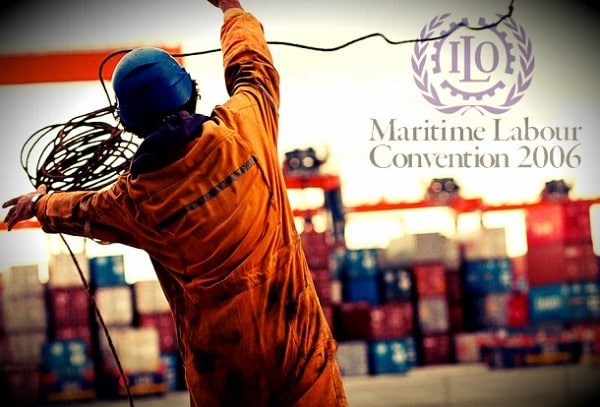
Comments
Post a Comment